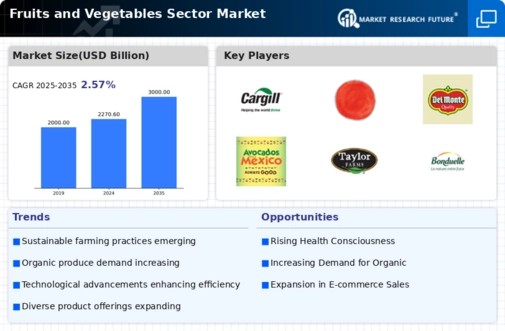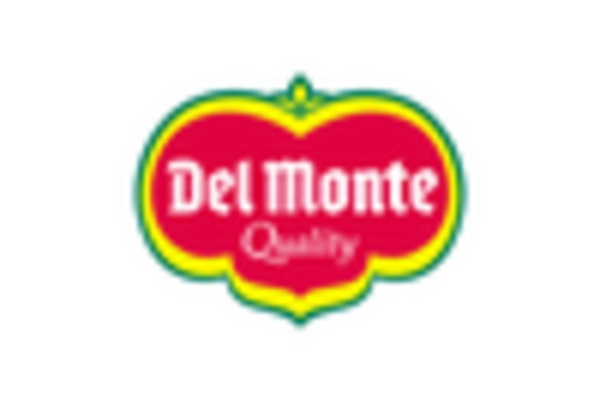The Fruits and Vegetables Sector Market experiences robust competitive dynamics, characterized by a multitude of players striving to capture market share through innovative practices, strategic collaborations, and a strong focus on quality and sustainability. The competition is fueled by changing consumer preferences leaning towards healthier options, increased demand for organic and non-GMO products, and the growing trend of farm-to-table dining experiences.
Organizations within this sector are increasingly leveraging technology to enhance supply chain efficiency and ensure product availability across various markets while simultaneously expanding their geographical presence.
The rise of online grocery shopping and direct-to-consumer channels has further intensified competition, enabling new entrants to disrupt traditional distribution models. The overall market landscape is marked by significant mergers and acquisitions, aiming to enhance product offerings and competitive advantages while aligning with environmentally responsible practices.
Sysco Corporation holds a prominent position in the Fruits and Vegetables Sector Market, well-recognized for its extensive distribution network and robust supplier relationships. The company excels in providing a wide range of fresh produce to food service operators, making it a key player in the industry.
Sysco's strengths lie in its ability to efficiently manage a vast inventory of fruits and vegetables, offering a one-stop-shop experience for clients ranging from restaurants to institutions. The company has invested heavily in technology to streamline its operations and enhance customer service, reflecting a commitment to meeting the demands of the modern consumer.
Additionally, Sysco's focus on sustainability and sourcing from reliable farms aligns with increasing consumer expectations for ethical practices in food supply. This strategy not only strengthens Sysco's market presence but also emphasizes the company's dedication to public health and environmental stewardship.
Dole Food Company is another significant contender within the Fruits and Vegetables Sector Market, recognized for its extensive portfolio of high-quality fresh produce, including fruits and vegetables. The company has forged a strong reputation for providing a diverse range of products, making it a household name in markets worldwide.
Dole excels in operational efficiency, leveraging advanced agricultural technologies to improve farming practices and ensure consistent quality. Its established supply chain and logistic capabilities facilitate timely deliveries, meeting the needs of various customers, from retail grocery chains to food processors and the food service sector.
Dole is also committed to sustainability, focusing on environmentally friendly practices throughout its supply chain, which resonates with increasingly health-conscious consumers. Furthermore, Dole's strong marketing initiatives, emphasizing the nutritional benefits of its products, foster brand loyalty and consumer engagement, enhancing its competitive standing in the fruits and vegetables sector.


















Leave a Comment